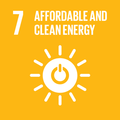Exeger prints flexible solar cells for consumer electronics that use ambient light for charging devices such as e-readers, tablets, and headphones, and do not rely on rare-earth metals.
Ambient light charging is a technology that enables energy conversion in both indoor and outdoor lighting conditions, and is not dependent on sunlight. A light-sensitive dye absorbs and then converts light energy into chemical energy which can be used to power or charge devices, eliminating the need to plug it in when there is a light source around.
Exeger’s simple design and flexible solar cell means it can work well with different personal electronics.
Exeger’s factory in central Stockholm is now the largest solar-cell printing factory in the world, and uses widely available materials for production of the solar cells, as opposed to other variants which rely on several rare-earth minerals. The production process is also entirely non-toxic.
Why you should care
143 TWh were needed to power consumer electronics in the US in 2017. That’s equivalent to 21,600,000 cars 50km per day for a whole year, or planting 1,672,000,000 seedlings and letting them grow for 10 years to compensate for the CO2 emissions.
How the Global Goals are addressed

Affordable and Clean Energy
Exeger’s solution could provide an innovative way of reducing the demand for consumer electronics charging, that was estimated to be 169 TWh in the US alone in 2017.


